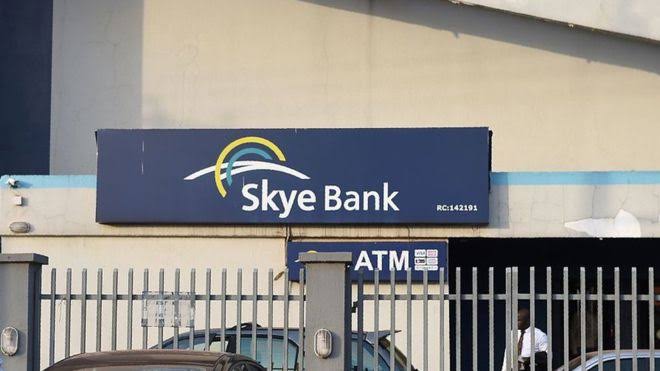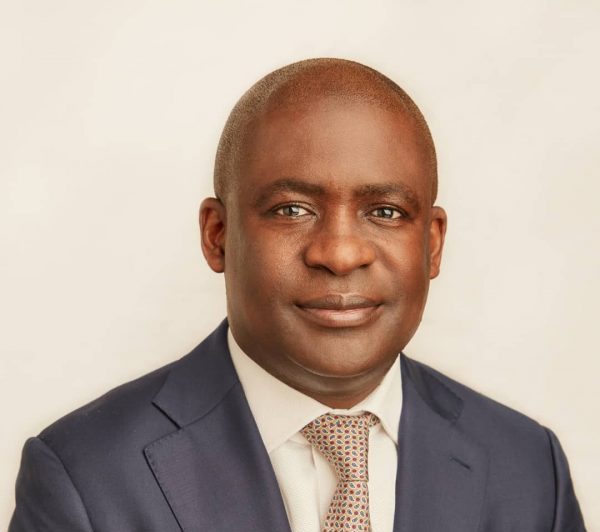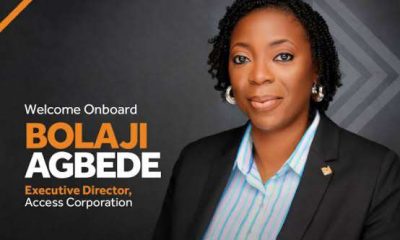Business
Exposed! Inside Nigeria’s troubling bank acquisitions

The recent remarkable feat achieved by Access Bank with the acquisition of Diamond bank has continued to attract interest on the necessity and viability of the strategy and how it is changing the banking industry. Although there is no consensus on its necessity, however, experts believe that the outcomes have generally been less than convincing.
Globally, mergers and acquisitions (M&As) have remained one of the most used means of expanding businesses and building conglomerates. The banking industry is no exception. The world has witnessed the collapsing into Bank of America of MBNA, Summit Bancorp, NationsBank, and Trust and Fleet Financial. JPMorgan Chase’s acquisition of Bear Stearns, in what was the most notable M&A deal of the early days of the 2008 financial crisis, and later acquisition of Washington Mutual for $1.836 billion, among other s are some of the notable examples.
This trend seems to have recommended itself to the ever competitive Nigerian banking industry as many banks have tried – and continue to try – to use acquisitions to gain leverage. And in a nation that probably holds a record for bank failures globally – due in part to poor regulation and corporate governance – banks have always been available for acquisition. But as it usually turned out, it has not been positive in a number of instances.
There have been few successful acquisitions, not doubt. In 2005, the Tony Elumelu- promoted Standard Trust Bank (STB) acquired the then troubled giant, United Bank for Africa (UBA). UBA had been one of the leading industry leaders in the 90s with First Bank and Union Bank, while STB was largely a fringe player.
More recently, there have been waves of mergers and acquisitions, nearly all of which, with the exception of Access Bank, have led to failures or some degree of financial issues in the acquiring banks. Access bank had defied the convention and made a huge success of its 2011 acquisition of Intercontinental Bank, to become one of the five top banks in the country, and indeed last year took over Diamond Bank, thus becoming Nigeria’s largest bank in not just Nigeria, but also Africa by customers base. Others have turned out differently, which makes the Access story an exception rather than the rule.
With the benefit of history, it would be safe to say that acquisition had not been the best of ways to grow a bank, especially when as always, the acquired bank was usually distressed and lack of proper due diligence both of which expose and endanger the new entity.
Access Bank and Ecobank had made signature acquisitions with their acquiring of Intercontinental Bank and Oceanic Bank respectively. Access had declared N95 PAT for 2018 FYE and PBT of N103.2 billion, which was a vast improvement from the 2017 figure of N78.2 billion. Ecobank on the other hand, ended the year with PAT of N102.2 billion, up 46 percent from N69.7 billion in 2017. Both banks vastly trails the two market leaders, Zenith and GT Bank.
While Access acquisition of Intercontinental will seem to have improved the new bank generally, the same cannot be said of Ecobank, which has continued to grapple with post acquisition issues. But it is the defunct Skye Bank that has headlined what can go wrong with acquisition.
In 2014, Skye Bank acquired Mainstreet and by 2015 it had practically failed; The same year, Heritage acquired Enterprise Bank and has also continued to battle with liquidity challenges as information available to BusinessHallmark suggests. Although Keystone bank, one of the bridge banks created by Federal Government in 2011 from Bank PHB has remained without suitors, recent controversy concerning its alleged clandestine acquisition may do it no good.
Chief Emma Nwosu, former Managing Director of the defunct ACB International argues that bank acquisition is in itself, not a bad business strategy, but it could go wrong when the acquiring banks fail to do due diligence and the management fails to leave up to their calling.
“It depends on the calculations made in the acquisition decision. The major reason for acquisition is to turn around the acquired institution and to improve, in the case of the banks, the business leverage of the bank,” Nwosu says.
“For this purpose, certain investigations are made and certain assumptions are made. It is when the investigations and the assumptions are faulty that you end up struggling. If they are not faulty, it should lead to the expansion of the original business.
He notes that while globally, bank acquisitions have been used to achieve expansion; it has proved problematic in Nigeria.
“In the Nigerian case, it has been problematic. But it has to do with faulty assumptions and investigations, as well as the macro economy. By the time you acquire a bank, the bank is basically distressed. A distressed bank is out of balance in the fundamental parameters. One of the problems of our banks is that they go beyond shareholders money, savings and fixed deposits into current account balances.
“That means that the basis for lending portfolio is always wrong. Again, we have high levels of bad loans: non performing loans and lost loans. So you may have acquired a bank on the assumption that you can get back those monies, but find out eventually that you can’t.
“If a bank surrenders itself like Diamond Bank has done, they are distressed. You need a turnaround strategy. So, it’s faulty assumption, faulty investigation, macroeconomics and management incompetence. It’s not that acquiring a bank is wrong abinitio.
“You can see that the case of Access Bank may be slightly different. It has just acquired Diamond Bank and they are doing well. After they took Intercontinental, they exploded exponentially. Probably they did better investigation and made better assumptions.”
In 2005, the Central Bank of Nigeria (CBN) under Professor Chukwuma Soludo embarked on bank consolidation, ostensibly to stem the tide of bank failures. The apex bank increased minimum capital base of commercial banks from N2 billion to N25 billion.
Inevitably, it led to a remarkable reduction in number of banks. There were a historic number of mergers and acquisitions such that at the end of the day, the number of banks in the country came down from 89 to 25, and later 23 with the merger of some banks like First Altantic Bank Plc and Inland Bank to form Fin Bank Plc, Stanbic Bank Limited and IBTC Chartered Bank Plc to form Stanbic-IBTC bank Plc. The number subsequently increased to 24 with the emergence of Citibank Nigeria Limited.
But Soludo’s reforms didn’t stop bank failures. Subsequently, during Sanusi Lamido Sanusi’s tenure as CBN governor, nine banks, some of which were thought too big to fail, had to be ‘rescued’ by the government. Access Bank bought over Intercontinental Bank, Ecobank took Oceanic Bank Plc, First City Monument Bank (FCMB) took Fin Bank Plc. Unity Bank Plc, recapitalised while Wema Bank Plc, scaled down operations to become a South West regional bank, which it has shed recently.
Yet three banks: Bank PHB, Afribank and Spring Bank, which were considered too much of a risk by investors, and ultimately failed to recapitalise ahead of the September 30, 2011 deadline, were taken over by the government through the instrumentality of Asset Management Company of Nigeria (AMCON). In their stead, the government created three bridge banks: Keystone Bank, Enterprise Bank and MainStreet Bank respectively. AMCON had injected N680 billion to recapitalise the banks.
In February 2014, AMCON announced it was selling 100 percent of its’ stake in MainStreet bank by October of the same year. Different banks submitted bids. After the biddings, Skye Bank which was apparently determined to emerge as one of the nation’s top banks, and had bid N126 billion, emerged the preferred bidder.
Skye paid an initial deposit of 20 percent, amounting to N26 billion. And on October 31, it paid the balance of N100 billion ahead of the November 3 deadline, to acquire MainStreet Bank.
The acquisition of MainStreet meant that Skye Bank became one of the country’s eight Systemically Important Banks (SIB). It became, in essence, one of the banks that were too big to fail, and whose possible failure had the potential of causing disruptions in the system. However, it eventually proved to be the bank’s major undoing.
Although a combination of poor management and alleged fraud had put it in terrible financial state and accounted for the disappearance of an estimated N446 billion from the bank; but it could be the acquisition of MainStreet that put a final nail in its coffin.
There is also the over leveraging of the bank by its chairman, Mr. Tunde Ayeni in the electricity sector, particularly the Discos. The bank failed rapidly.
In 2014, its profit before tax plunged 46.7 percent from N19.6billion in 2013 to N10.4 billion in 2013. And its’ profit after tax dipped to N9.7 billion as against N18.5 billion reported in 2013. By June 2015, the bank had made a loss N40 billion and its’ Capital Adequacy had plunged to about 10 percent, far below acceptable standard of 16 percent for Systemically Important Banks (SIB).
And by December 2015, it had lost over 55 percent of its share value (from N3.58 in June 2014 to N1.58 in Dec 2015). Its liquidity ratio had gone down to 8 percent as opposed to minimum regulatory requirement of 30 percent. Its’ Loan to Deposit Ratio was at 98 percent, against recommend ratio of 80 percent. CBN, in June, 2016, sacked the board and took control of the bank.
“Acquisitions generally have high rate of failure globally,” notes Johnson Chukwu, MD/CEO, Cowry Asset Management Company Limited. “It could because of lack of due diligence, and particularly for financial institutions, when either of the two converging institutions have severe liquidity challenge, it could affect the new entity.
“And I think that in all the instances in Nigeria, one or the two parties in the merger had severe liquidity challenges before the acquisition. So the new entity lacked the liquidity to meet the liability obligations of the new entity.”
Indeed, Skye Bank could never have afforded the amount with which it acquired MainStreet Bank. At the time the bid for MainStreet was made, the net asset of MainStreet was N69 billion, but Skye bid N126 billion. Thus, Skye was paying N59 billion more than the net worth of MainStreet at a time when it’s market capitalisation was less than N40 billion, which was certainly not sufficient to support the bid.
And judging by the bank’s numbers as at Dec 2013, it only had a maximum headroom of N26 billion of its Tier 1 Capital to fund the acquisition, meaning it needed to raise additional N100 Billion to be able to buy MainStreet. But perhaps driven by inordinate quest to grow big, the bank plunged itself into a ditch and consequently joined the long list of failed banks.
CBN has since taken it over and in September 2018 set up another bridge bank, Polaris in its stead. But the new bank, despite receiving a whooping N1.4 trillion injection from the apex bank, is still in troubled waters on account of poor management by the board put in place to run it.
“Our banks are generally badly run,” Nwosu says. “The kind of money the management of banks collect as pay is mind boggling. It’s like Nigeria government, you budget N8 trillion and you consume N7trillion so that you have only N1trillion to build roads and others, you can’t grow.
“The same thing is happening in the banks. Even though the economy is struggling, they are not curtailing their voracious appetite. And when they have consumed a lot of the income, they start manipulating the books to look good before the shareholders and the regulators.”
It was perhaps, with the same intention to gain leverage that Ecobank in 2011, completed the acquisition of Oceanic Bank International, having secured N290 billion forbearance from AMCON. The acquisition meant that Ecobank had in excess 600 branches, making it the fourth largest banking network in Nigeria. But that appears to be the only good news that came out of the merger, Ecobank subsequently began to battle with liquidity and management challenges.
The bank’s gross earnings have continued on a downward trend from $2.2 billion in 2014, $2.1billion in 2015, $1.9billion in 2016, $1.83 billion in 2017 to $1.82billion in 2018. And information available to our correspondents suggest that the bank is increasingly struggling with liquidity challenges, which may have informed its recent Euro bond and proposed public offering.
Heritage, from available information, is also facing challenges, which indeed puts question marks to acquisitions in the country.











